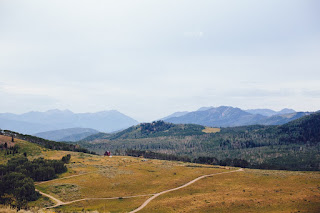Park City
Park City was founded as a mining town in 1870 after lead, gold and silver were discovered in the area. The population grew so much that many thought it would soon surpass Salt Lake City as the most important city in Utah. But the mines reached the water table and were flooded. Park City almost became a ghost town until winter sports came to the city in the 1950s. Even so, the city did not recover from the economic slump until the 1970s.
History
The area was traveled by the early Mormon pioneers on their journey to where they settled and built Salt Lake City. One of their leaders, Parley P. Pratt, explored the canyon in 1848. He was given a charter the following year to build a toll road through it, which was finished in 1849. The basin at the top of the canyon was good for grazing, and a few families settled there. Early on, the area was deeded to Samuel Snyder, Heber C. Kimball and Jedediah Grant. The settlers named it "Parley's Park City", which was shortened to "Park City" in the early 1900s. The first known discovery of ore in this area was by Colonel Patrick E. Connor, who instigated his men to search the area in bringing non-Mormons to the Utah region. The finding of silver, gold and lead sparked the first silver mines in Park City in the 1860s. Park City's large mining boom brought large crowds of prospectors setting up camps around the mountain terrain, marking the first mining settlements. Although it was not the first find, the Ontario silver mine, discovered by Herman Buden in 1872 and later purchased by George Hearst, was the first major producer. In 1880, a spur line was established to the Echo station of the First Transcontinental Railroad. By 1892 the Silver King Mine and its owners Thomas Kearns and David Keith took the spotlight as one of the most famous silver mines in the world. While silver was thriving in Utah, other mines around the world were depleted, drawing many of these miners to Park City. The town flourished with crowds of miners and wealth. However, the city nearly became a ghost town by the end of the 1950s because of a drop in the price of silver.




Comments
Post a Comment